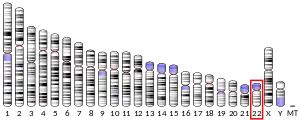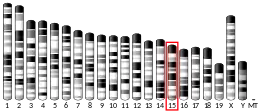| MFNG | |||||||||||||||||||||||||||||||||||||||||||||||||||
|---|---|---|---|---|---|---|---|---|---|---|---|---|---|---|---|---|---|---|---|---|---|---|---|---|---|---|---|---|---|---|---|---|---|---|---|---|---|---|---|---|---|---|---|---|---|---|---|---|---|---|---|
| |||||||||||||||||||||||||||||||||||||||||||||||||||
| Identifiers | |||||||||||||||||||||||||||||||||||||||||||||||||||
| Aliases | MFNG, MFNG O-fucosylpeptide 3-beta-N-acetylglucosaminyltransferase | ||||||||||||||||||||||||||||||||||||||||||||||||||
| External IDs | OMIM: 602577 MGI: 1095404 HomoloGene: 1803 GeneCards: MFNG | ||||||||||||||||||||||||||||||||||||||||||||||||||
| |||||||||||||||||||||||||||||||||||||||||||||||||||
| |||||||||||||||||||||||||||||||||||||||||||||||||||
| |||||||||||||||||||||||||||||||||||||||||||||||||||
| |||||||||||||||||||||||||||||||||||||||||||||||||||
| |||||||||||||||||||||||||||||||||||||||||||||||||||
| Wikidata | |||||||||||||||||||||||||||||||||||||||||||||||||||
| |||||||||||||||||||||||||||||||||||||||||||||||||||
Beta-1,3-N-acetylglucosaminyltransferase manic fringe is an enzyme that in humans is encoded by the MFNG gene,[5][6][7] a member of the fringe gene family which also includes the radical fringe (RFNG) and lunatic fringe (LFNG).[8][9]
They all encode evolutionarily conserved proteins that act in the Notch receptor pathway to demarcate boundaries during embryonic development. While their genomic structure is distinct from other glycosyltransferases, fringe proteins have a fucose-specific beta1,3 N-acetylglucosaminyltransferase activity that leads to elongation of O-linked fucose residues on Notch, which alters Notch signaling.[7]
References
- 1 2 3 GRCh38: Ensembl release 89: ENSG00000100060 - Ensembl, May 2017
- 1 2 3 GRCm38: Ensembl release 89: ENSMUSG00000018169 - Ensembl, May 2017
- ↑ "Human PubMed Reference:". National Center for Biotechnology Information, U.S. National Library of Medicine.
- ↑ "Mouse PubMed Reference:". National Center for Biotechnology Information, U.S. National Library of Medicine.
- ↑ Egan S, Herbrick JA, Tsui LC, Cohen B, Flock G, Beatty B, Scherer SW (Feb 1999). "Mapping of the human Lunatic Fringe (LFNG) gene to 7p22 and Manic Fringe (MFNG) to 22q12". Genomics. 54 (3): 576–7. doi:10.1006/geno.1998.5559. PMID 9878264.
- ↑ Johnston SH, Rauskolb C, Wilson R, Prabhakaran B, Irvine KD, Vogt TF (Jul 1997). "A family of mammalian Fringe genes implicated in boundary determination and the Notch pathway". Development. 124 (11): 2245–54. doi:10.1242/dev.124.11.2245. PMID 9187150.
- 1 2 "Entrez Gene: MFNG MFNG O-fucosylpeptide 3-beta-N-acetylglucosaminyltransferase".
- ↑ "Troublesome gene names get the boot", 6 November 2006, Michael Hopkin, nature.com
- ↑ "Sonic Hedgehog, DICER, and the Problem With Naming Genes", Sep 26, 2014, Michael White. psmag.com
Further reading
- Cohen B, Bashirullah A, Dagnino L, et al. (1997). "Fringe boundaries coincide with Notch-dependent patterning centres in mammals and alter Notch-dependent development in Drosophila". Nat. Genet. 16 (3): 283–8. doi:10.1038/ng0797-283. PMID 9207795. S2CID 28033622.
- Moran JL, Johnston SH, Rauskolb C, et al. (1999). "Genomic structure, mapping, and expression analysis of the mammalian Lunatic, Manic, and Radical fringe genes". Mamm. Genome. 10 (6): 535–41. doi:10.1007/s003359901039. PMID 10341080. S2CID 27214129.
- Dunham I, Shimizu N, Roe BA, et al. (1999). "The DNA sequence of human chromosome 22". Nature. 402 (6761): 489–95. Bibcode:1999Natur.402..489D. doi:10.1038/990031. PMID 10591208.
- Van Tine BA, Knops J, Shaw GM, May WA (2000). "Assignment of human MFNG, manic fringe Drosophila homolog, to 22q13.1 using tyramide fluorescence in situ hybridization (T-FISH)". Cytogenet. Cell Genet. 87 (1–2): 132–3. doi:10.1159/000015379. PMID 10640833. S2CID 24323351.
- Moloney DJ, Panin VM, Johnston SH, et al. (2000). "Fringe is a glycosyltransferase that modifies Notch". Nature. 406 (6794): 369–75. Bibcode:2000Natur.406..369M. doi:10.1038/35019000. PMID 10935626. S2CID 4382611.
- Shimizu K, Chiba S, Saito T, et al. (2001). "Manic fringe and lunatic fringe modify different sites of the Notch2 extracellular region, resulting in different signaling modulation". J. Biol. Chem. 276 (28): 25753–8. doi:10.1074/jbc.M103473200. PMID 11346656.
- Thélu J, Rossio P, Favier B (2003). "Notch signalling is linked to epidermal cell differentiation level in basal cell carcinoma, psoriasis and wound healing". BMC Dermatol. 2: 7. doi:10.1186/1471-5945-2-7. PMC 111189. PMID 11978185.
- Panin VM, Shao L, Lei L, et al. (2002). "Notch ligands are substrates for protein O-fucosyltransferase-1 and Fringe". J. Biol. Chem. 277 (33): 29945–52. doi:10.1074/jbc.M204445200. PMID 12036964.
- Strausberg RL, Feingold EA, Grouse LH, et al. (2003). "Generation and initial analysis of more than 15,000 full-length human and mouse cDNA sequences". Proc. Natl. Acad. Sci. U.S.A. 99 (26): 16899–903. Bibcode:2002PNAS...9916899M. doi:10.1073/pnas.242603899. PMC 139241. PMID 12477932.
- Shao L, Moloney DJ, Haltiwanger R (2003). "Fringe modifies O-fucose on mouse Notch1 at epidermal growth factor-like repeats within the ligand-binding site and the Abruptex region". J. Biol. Chem. 278 (10): 7775–82. doi:10.1074/jbc.M212221200. PMID 12486116.
- Veeraraghavalu K, Pett M, Kumar RV, et al. (2004). "Papillomavirus-Mediated Neoplastic Progression Is Associated with Reciprocal Changes in Jagged1 and Manic Fringe Expression Linked to Notch Activation". J. Virol. 78 (16): 8687–700. doi:10.1128/JVI.78.16.8687-8700.2004. PMC 479091. PMID 15280477.
- Collins JE, Wright CL, Edwards CA, et al. (2005). "A genome annotation-driven approach to cloning the human ORFeome". Genome Biol. 5 (10): R84. doi:10.1186/gb-2004-5-10-r84. PMC 545604. PMID 15461802.
- Gerhard DS, Wagner L, Feingold EA, et al. (2004). "The Status, Quality, and Expansion of the NIH Full-Length cDNA Project: The Mammalian Gene Collection (MGC)". Genome Res. 14 (10B): 2121–7. doi:10.1101/gr.2596504. PMC 528928. PMID 15489334.
This article is issued from Wikipedia. The text is licensed under Creative Commons - Attribution - Sharealike. Additional terms may apply for the media files.





